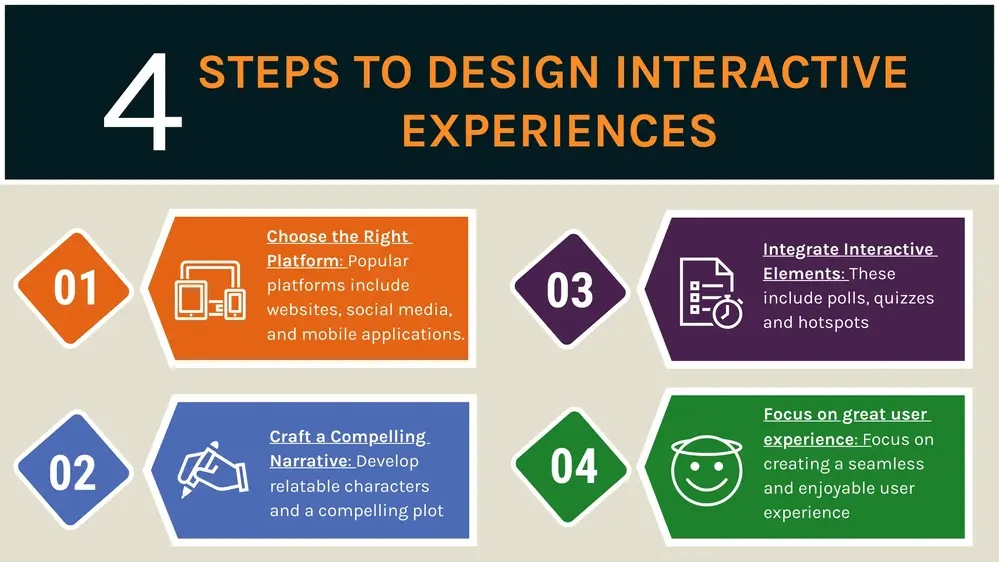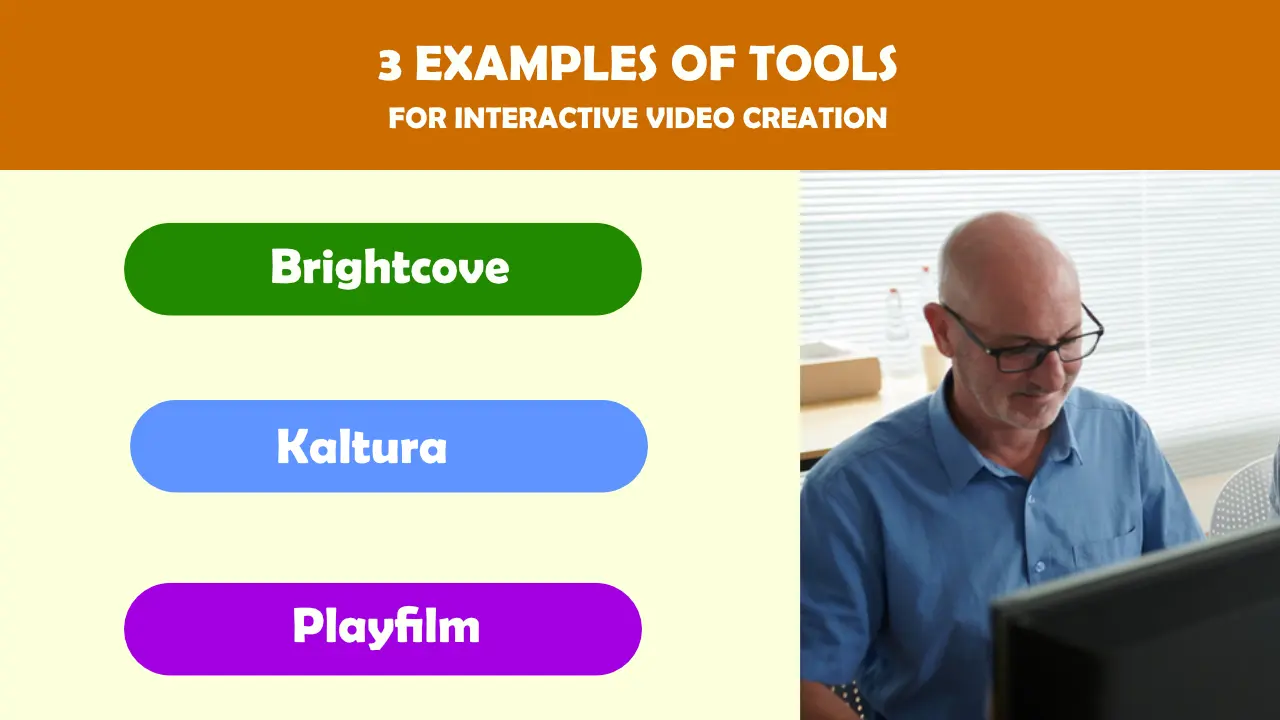
Table of contents
Introduction
In the world of content creation, captivating an audience has become more important than ever. With shorter attention spans and an abundance of information at our fingertips, it is essential to find innovative ways to connect with our target audience. This is where the power of storytelling and interactive content comes into play.
Storytelling has been a powerful tool throughout history, captivating listeners and leaving a lasting impact. By incorporating storytelling techniques into our content, we can create a meaningful connection with our audience. This connection goes beyond simply presenting information, as it engages emotions, evokes curiosity, and fosters a sense of relatability.
Interactive content takes the concept of storytelling a step further by actively involving the audience. It allows individuals to participate and interact with the content, making it a more engaging and memorable experience. From quizzes and polls to virtual reality and augmented reality experiences, interactive content offers a range of possibilities to captivate and delight the audience.
Embracing storytelling through interactive content can significantly elevate a brand’s digital presence, create memorable experiences for audiences, and foster a deeper understanding of the information being presented. As the landscape of content consumption continues to evolve, staying ahead of the curve with innovative storytelling methods will be key to engaging and retaining consumers in a rapidly changing digital world.
Essentials of Interactive Storytelling
Defining Interactive Content
Interactive content is a form of multimedia storytelling that allows audiences to actively participate in a narrative experience. It combines the traditional elements of storytelling with modern technology, providing users with a highly personalized experience. Examples of interactive content include interactive videos , games, quizzes, and virtual reality projects. Brilliantio explores this emerging form of storytelling and demonstrates how it represents a shift in engaging audiences.
Core Principles of Engagement
 To effectively engage audiences with
interactive storytelling
, several core principles must be considered:
To effectively engage audiences with
interactive storytelling
, several core principles must be considered:
-
Audience empowerment: Give users the power to influence the storyline and make choices throughout the experience.
-
Simplicity: Make it easy for users to navigate through the interactive content, avoiding overly complex interfaces.
-
Relevance: Ensure that the content is relevant and interesting to the target audience.
-
Visual storytelling : Use striking visuals, animations, and immersive designs to captivate users.
-
Feedback: Allow users to receive feedback on their choices, promoting engagement and curiosity.
The Impact of Interactivity on Narrative
The primary goal of interactive storytelling is to create memorable experiences for users. Interactivity can improve
audience engagement
, generate a greater impact on the reader, and promote better understanding of the content.
Interactive content also allows brands to build a stronger emotional connection with their audience, leading to increased trust and long-term relationships.
MyOptimind
emphasizes how interactive storytelling involves audience participation, and can effectively achieve the desired impact on users.
Additionally, interactive storytelling can enhance data presentation, making it more compelling and persuasive for audiences. Martechs Advisor suggests using interactive infographics as an example for a data-heavy presentation.
Designing Interactive Experiences

Choosing the Right Platform
Selecting an appropriate platform for your interactive content is crucial to ensure it reaches the right audience and provides the desired experience. Consider factors such as the target demographic, their preferences, and where they spend their time online. Popular platforms include websites, social media, and mobile applications.
Crafting a Compelling Narrative
A captivating narrative is the backbone of any interactive experience. To create an engaging story, identify your primary message and the emotions you want to evoke. Develop relatable characters and a compelling plot that keeps the audience interested. Integrating a dynamic narrative helps to foster a unique connection with the audience.
Integrating Interactive Elements
Interactive elements
, such as quizzes and polls, elevate the audience’s engagement with your content.
Quizzes
are not only entertaining but also educational and can go viral, increasing your brand visibility. Experiment with various interactive elements to find the ones that resonate with your audience the most.
| Interactive Element | Description | Example |
|---|---|---|
| Quizzes | Test the user’s knowledge or preferences | “Which Disney Princess Are You?” quiz |
| Polls | Collect user opinions on a specific topic | “Which product feature is most valuable?” |
| Choose-your-own-adventure | Users make choices that determine the story’s outcome | Interactive novels or video experiences |
User Experience Considerations
Lastly, focus on creating a seamless and enjoyable user experience. This includes designing visually appealing and intuitive interfaces, ensuring fast load times, and providing accessibility options for users with disabilities. Continuously test and iterate the interactive content, keeping user feedback in mind to make improvements.
In summary, designing interactive experiences involves choosing the right platform, crafting a compelling narrative, integrating interactive elements, and optimizing user experience. By considering these factors, you can create memorable and engaging content for your audience.
Technologies Behind Interactive Storytelling
Advancements in Web Technologies
The modern web has provided various tools that have significantly contributed to the rise of interactive storytelling. One such advancement is HTML5, which has enabled creators to design rich interactive experiences through elements like audio and video integration, animations, and interactivity.
Another contributing factor is the widespread use of JavaScript, the powerful programming language that allows for dynamic content manipulation, enabling real-time reactions to user interactions.
Content creators also rely on robust CSS (Cascading Style Sheets) techniques to enhance their narratives visually by creating eye-catching and responsive layouts across varying devices and screen sizes.
Interactive Video Tools

Many digital storytelling efforts incorporate video as an essential tool for visual communication.
Interactive video tools
have evolved to include features that enable viewers to choose their own path in a story or answer questions within the video, increasing the level of engagement. Some prevalent examples of such tools are:
-
Brightcove(formerly HapYak): HapYak enables users to add interactive elements, such as clickable links, quizzes, and surveys, to their videos. Viewers can engage with the content by interacting with these elements.
-
Kaltura: offers a wide range of video solutions, including the ability to create interactive videos that can be used for education, enterprises, and media organizations to enhance viewer engagement and learning outcomes.
-
PlayFilm: PlayFilm is an interactive video creation and hosting platform. It provides features like click-to-purchase, hotspots, and quizzes to engage viewers and enhance their participation.
Emerging Interactive Platforms
New storytelling platforms are constantly improving to deliver increasingly immersive experiences. Many of these
interactive storytelling platforms
offer frameworks that are easy to use for both creators and consumers, featuring intuitive interfaces and supporting various media formats like text, images, videos, animations, and audio. Some emerging platforms to look out for include:
-
Virtual Reality (VR): VR technology enables users to experience stories through a 360-degree perspective, offering a truly immersive and interactive world.
-
Augmented Reality (AR): AR stories overlay digital content and interactivity onto the physical world, providing context-aware experiences that engage users on a different level.
-
Game-based Storytelling: Leveraging video game mechanics, these platforms allow for stories to unfold depending on the user’s choices and actions, fostering a more personalized experience.
The advancement of web technologies, interactive video tools, and emerging platforms empower content creators to craft memorable and engaging stories that captivate audiences and elevate storytelling standards.
Creating Emotive Connections

Empathy in Storytelling
Empathy plays a crucial role in building connections with your audience. By crafting stories that reflect real-life emotions and experiences, you can create a sense of relatability and encourage your audience to feel emotionally invested. For example, a complete guide to emotional content design explains how emotional triggers can be used to create a deeper connection with the audience through text, images, videos, or interactive elements.
Character Development
A well-developed character is essential in creating an emotional connection with your audience. These characters should have:
-
Backstories: Providing a character’s history can help the audience understand their motivations and perspectives.
-
Goals: Characters need clear goals that drive their actions, making them relatable and engaging.
-
Conflicts: Introducing internal or external conflicts for the characters can add depth and encourage the audience to root for their resolution.
Creating Emotional Connections: Storytelling Techniques for engaging video audiences offers additional insights on how compelling characters, relatable narratives, and authentic emotions can resonate with the viewers.
Audience Participation
Interactive content can make stories more meaningful and memorable for your audience. Some popular ways to include interactive elements are:
-
Quizzes: Test the audience’s knowledge or help them discover relevant information.
-
Branching storylines: Let users choose their adventure and actively shape the story outcome.
-
Infographics: Guide users through a visual journey with interactive design elements.
The article on
Engaging Your Audience With Immersive Experiences
highlights the importance of storytelling in creating shareable and impactful content.
By integrating empathy, character development, and audience participation into your storytelling, you can create a powerful emotional connection that makes your interactive content stand out and leaves a lasting impression on your audience.
Measuring Engagement

Analytics and User Feedback
Analyzing user behavior and gaining feedback is integral to optimizing the interactive content. One way to gather data is by using Google Analytics or other web analytics tools to track various metrics, such as session duration, bounce rate, and the number of users engaged. Keeping an eye on the
engagement rate
will help identify if your content is resonating with the audience.
Additionally, incorporate surveys, polls, or comment sections for users to share their thoughts and opinions. This qualitative data can be invaluable in understanding user reactions and insights, leading to content improvements.
Evaluating Success
Evaluating the success of interactive content can be done with a combination of quantitative and qualitative factors. Below is a list of variables to consider:
-
Traffic: Analyze web traffic to determine whether the content is drawing a larger audience.
-
Session Duration: Observe the time users spend interacting with the content, longer sessions convey higher engagement.
-
Social Media Metrics: Track likes, shares, and comments to gauge the content’s popularity and reach.
-
Conversion Rates: Identify whether the content helps drive desired user actions, such as lead generation or sales.
-
User Feedback: Assess the qualitative feedback gathered on the content’s appeal and effectiveness.
In conclusion, effectively measuring engagement in interactive storytelling helps fine-tune your content and better cater to your audience, leading to increased trust and long-term relationships .
Case Studies
Successful Interactive Content Examples
-
One notable example of engaging interactive content is the New York Times’ “Snow Fall”article. This piece effectively combines video, images, a slide show and animations with a narrative to create an immersive experience.
-
Another noteworthy example is the “You Draw It” series by New York Times, which allows readers to interactively participate in data-driven storytelling. Some other interactive content examples used in content marketing include quizzes and calculators, which are proven to increase audience engagement.
Failure of Interactive Content
Despite the advantages of interactive content, there have been some instances where projects did not succeed as expected. Common reasons for these failures include:
-
Lack of clear goals - It is crucial to establish clearly defined goals before beginning an interactive project to ensure that resources are properly allocated and the experience aligns with the target audience.
-
Overcomplicating the content - Keep interactive elements straightforward and user-friendly. Overloading the content with too many features or deploying a cumbersome interface can deter users from engaging.
-
Ignoring audience preferences - Always consider the preferences and expectations of your target audience. Ignoring the needs and desires of users can result in content that feels irrelevant or out of touch.
By learning from these failures and incorporating the insights into future projects, it is possible to create uniquely engaging and memorable experiences for audiences.
The Future of Interactive Storytelling
Trends and Predictions

-
Personalized Experiences: As artificial intelligence technology advances, the potential for crafting personalized stories increases. Tailoring the narrative to individual preferences and interests will be a key trend in coming years.
-
Increased Immersive Technologies: We can expect to see an upsurge in VR and AR technologies, allowing users to truly step into a story and be a part of the world created by the storyteller.
-
Collaborative Storytelling: The use of social media and other digital platforms will enable users to actively contribute to the development of an interactive story, making it a more collective and dynamic experience.
Innovations to Watch
Several innovations within the realm of interactive storytelling deserve attention as we look toward the future:
-
Choice-driven Narratives : Enabling users to influence the narrative through their choices is becoming increasingly popular. Interactive Storytelling Platforms provide a framework for creators to build dynamic, engaging stories that adapt to user decisions.
-
Multi-platform Storytelling: Combining various forms of media, such as text, images, videos, and audio, to deliver a rich and diverse narrative experience across multiple devices and platforms is a growing trend within interactive storytelling.
-
Gamification : Integrating game elements into the storytelling process can increase user engagement and enjoyment. Interactive stories may soon include elements similar to video games, where users can complete challenges or solve puzzles to progress further within the story.
By keeping an eye on these trends and innovations, it is clear that the future of interactive storytelling promises a highly engaging and immersive experience for audiences, enabling them to dive deeper into the heart of the stories they consume.
Conclusion
In summary, storytelling through interactive content is an effective method to engage audiences and create memorable experiences. By incorporating various types of interactive content, such as
infographics
and quizzes, businesses can drive higher engagement and foster better understanding among their target audience.
The power of storytelling comes from its ability to evoke emotions and invite users to be a part of the narrative. With the rise of
digital storytelling
, content creators have more media and formats at their disposal than ever before. This enables them to craft personal and impactful stories tailored to different platforms.
It is crucial for marketers to wisely distribute their interactive content across various channels, such as websites, social media, and email marketing campaigns. This
multi-channel approach
can maximize visibility and engagement, ensuring that the content resonates with users across different digital touchpoints.
To conclude, storytelling through interactive content provides significant benefits, including increased engagement, memorable experiences, and better decision-making. By leveraging the art of storytelling in content marketing, businesses can connect with their audience in a more profound and lasting manner, ultimately driving growth and success.









